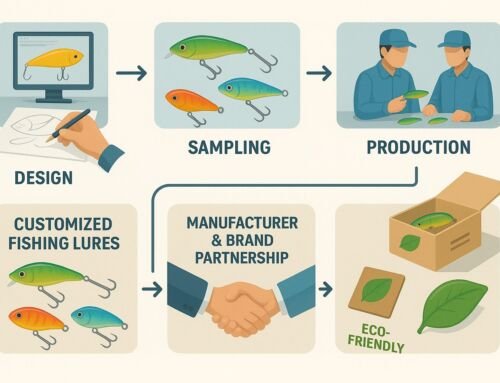The visual ability of fish is a subject that we fishermen have been studying. We know that the visual range of fish cannot be compared with that of land animals in terms of distance and width. From an evolutionary perspective, terrestrial organisms and aquatic organisms have completely different structures of visual systems. Taking us humans as an example, the lens of the human eye is lens-shaped, has elasticity and curvature, and has the function of contraction and adjustment. If we want to see the shape of objects clearly, we rely on the ciliary muscles to adjust the curvature of the lens so that the image is exactly positioned on the retina. The eyeball of a fish is round, lacks elasticity, and the surface curvature cannot be adjusted. The distance between the lens and the retina is adjusted by pulling the lens back and forth by the chain process muscle. Therefore, the actual visual range of the fish is only a dozen centimeters to tens of centimeters. Centimeters vary.
It seems to be an indisputable fact that fish are so-called “myopic”. We are accustomed to using our own fixed thinking to look at the problem of fish, but we ignore that they appeared on the earth as early as 450 million years ago. When we stand on the shore with a high attitude and open our eyes but cannot see clearly 1 meter deep under the water, in fact, fish can “see” people standing on the shore clearly at a depth of 10 meters underwater. .
We generally know that fish use hearing and smell to find prey, use lateral line “radar” to lock on, and finally use visual positioning to attack the prey. Here is a not-so-appropriate analogy. If fish feeding is compared to a local war, the fish’s sense of hearing and taste are like early warning machines. They first electronically detect the position, and then rush forward to take in food by sight.
But what we don’t know is that fish are remarkable earth creatures that have evolved for 450 million years. Although fish’s vision in water is limited, it does not prevent fish from seeing clearly objects in the water and things on the shore. Scenery. Fish’s perception of light is much greater than their vision. This ability is produced by the absorption and refraction of light by the fish’s eyes through the water body. Ichthyologists examined fish eyes in different environments and concluded: “The ability of fish to use light to distinguish objects is relatively broad, and can form a three-dimensional detection range for water, land and air. Its ability stems from the interaction between objects and light. Contrast.”
When fish stick to the bottom to find food, this ability is not very obvious, because the prey is basically motionless or slow-moving at the bottom of the water. In other words, prey often have excellent primary color imitations, and bottom fish can only identify prey by smell. But when the fish raises its head, it relies on the brightness contrast formed by the action of light on the prey’s body to identify the prey.
The catfish’s vision has deteriorated to the point of almost disappearing, but its hearing is extremely developed. During the years of survival and hunting, it is very familiar with the wave frequency of its prey. When the catfish dives in front of the small fish, the small fish provides the sound above the fish’s eyes. It is an ideal silhouette. For scaly bait, the polarized light reflected by the scales (which we often observe) stimulates the appetite of catfish even more. Moreover, the more the small fish struggles to land on the predator’s retina, the stronger the dynamic effect will be.
We often say that earthworms are universal fishing baits. Not only do they contain chemical elements that are favored by more than a dozen fishes, but in the dark water bottom, the light absorbed by the liquid on the surface of their bodies will pass through their bodies, emitting a red color that cannot be seen by the human eye. light source. Catfish live in underwater caves all year round and can distinguish the color of light better than other fish. It can even see ultraviolet rays that the human eye cannot distinguish. For nocturnal fish species, the light source emitted by earthworms is like a red lantern lit in front of pedestrians in the night. Moreover, the closer the hook bait is to the bottom and the darker the light, the better. This is also the secret to using earthworms when fishing in turbid water bodies.
Taking advantage of the extraordinary visual contrast ability of fish, we can set the color of the bait used when fishing to be clearly different from the water color. Black is the color with the lowest transparency, so the fish have evolved a gray-black back. Viewed from above the water body, it appears to be the same color as the water body and the base color of the bottom, with the fish perfectly hidden in the light. White is the most transparent color that reflects the most light. Fish have evolved to have gray-white abdomens, making it impossible for hunters at the bottom to identify their targets in the light.
The contrast of water color can be used to create a bait color that is easier for fish to find, instead of being mixed in the water color and making it difficult to distinguish. This should be the most basic requirement for us to be able to catch fish, which is especially important when fishing in turbid water bodies.
Regarding the perception of color, scientific research shows: “Fish and humans also have different tendencies.” Humans are sensitive to brighter warm colors such as red and yellow. But fish have a special liking for green, which is inseparable from the green environment around their living environment. In the subconscious mind of fish, green should be the safest color. In a long-term life in the water body, whenever the darkness of dawn gradually disappears and the light passes through the water layer and falls on the bottom of the water, the first thing to be restored in the eyes of fish is the green color of aquatic plants and the green color of algae.
For other colors, fish can also sense them. And it can distinguish far more pigments than the human eye can. Fish are most interested in orange or red, followed by blue. We can find evidence in the marriage color of male fish. The blue patches on the sides of male horsemouths and the camouflage colors found on marine fish are instructive.
The light source that the human eye can see is only a small part of the total electromagnetic radiation obtained from sunlight, called the “visible spectrum”. Actual colors within the visible spectrum are determined by the wavelength of light, with red and orange having longer wavelengths and green, violet and blue having shorter wavelengths. When light hits water, its intensity quickly decreases and its color changes. This change is called “attenuation.” The attenuation of light is inseparable from suspended particles and microorganisms in the water body. The lower the visibility and turbidity of the water, and the deeper the water level, the poorer the penetration of light.
Usually the color of the bait we use is determined based on the discrimination habits of the human eye. We only consider the taste and state of the bait, but not the discrimination habits of fish eyes. Red and orange are the preferred colors for freshwater fish, otherwise the marriage color of fish will lose its meaning. There is nothing wrong with using red and orange baits for fishing in shallow water, but using them in deeper water completely reduces the effect of color.
When fishing at a depth of more than 3 meters, the red bait will be close to black due to the change in wavelength, which is similar to the basic color of the bottom, which is very unfavorable for fish to find bait balls. Orange baits are a little better in this regard, but close to crimson. The worst ones are purple and tan-colored baits. Yellow bait has significant advantages in fishing in deep water.
Tease fishing is a fishing method we often use. Generally, the dynamic effect produced by the bait ball is used to stimulate the fish to open their mouths. Under normal circumstances, we consider the temperature, air pressure, hydrolyzed oxygen content and the fish’s fullness, but rarely consider the color of the bait ball. But in fact, when we fish, the first thing we should consider is the color of the bait and the depth of execution, and then other things.
Trying to prepare bait colors suitable for different water depths, rather than colors visible in the air, should be a problem that merchants currently need to solve. In fact, the emergence of polarized fishing glasses is to solve this practical problem, but in any case, merchants still consider some humanized things and do not humanize them.
There are some bright colors on the side of the male fish’s body that have a laser radiation effect. This color can change into different colors according to the intensity of the light, thus attracting females to chase them. It is similar to the principle of fluorescent materials in our real life. But for some reason, fluorescent materials are difficult to see in the field of fishing. Currently, the only known applications are rods, hooks, and lines. At present, fluorescent materials are mostly used in creek fishing tackle and lures, but they are not used in bait.
Imagine that during our fishing trip, if we could have a bait that is added with bioluminescent powder, constantly changes color as it goes down, and always gives the fish clear visual appeal… I can’t help but be a little excited just thinking about it!





